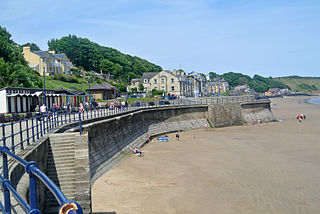The Return of the Bonhomme Richard?
Last week the British press reported that marine archeologists announced the discovery of the wreck of the Bonhomme Richard, the French-built Continental Navy warship commanded by John Paul Jones during his most celebrated battle.
The Yorkshire Post reported:
The Post reported “a scramble to claim the land for tourism, with the lucrative US market in sight.” Locals expect “Americans making pilgrimages to Yorkshire to see at first hand where it happened.”
That’s certainly motivation to make a big claim, but what’s the evidence? How do these researchers know this wreck is the Bonhomme Richard?
The article mentions a “wooden figurehead of a lion and shield that adorned the bow, and a carving of a shepherdess from the stern.” The Scarborough News added that the lion showed battle damage. In addition, the Post said, “Some of the debris recovered from Bonhomme Richard betrays burn marks consistent with the explosions that sank it.”
In 1777 the French government did decree that figureheads on its ships would be lions holding shields displaying the national arms. However, I read that eighteenth-century Royal Navy ships also used the lion symbol. And in a quick search I couldn’t find any description of the Bonhomme Richard’s particular decorations.
The B.B.C.’s brief video report on the find shows some gentlemen displaying waterlogged timbers, but no figureheads.
Another wrinkle to this story is that U.S. government would claim the wreckage, as it does any U.S. naval ship anywhere in the world. Back in 1779, of course, the British government didn’t recognize the U.S. of A. or its laws. But that was what all the fighting was about, wasn’t it?
The Yorkshire Post reported:
Mystery has for decades surrounded the exact location of the wreck. It went down in flames during the American Revolutionary war, at the bloody Battle of Flamborough Head in 1779, in which Jones led a makeshift flotilla of French ships into the North Sea, harassing commercial shipping as far as Bridlington.And where did Jones’s foundering flagship end up? The Post said:
In a deadly skirmish in which both sides claimed victory, Jones – who had fled his native Scotland to become one of the first commanders in the rebel service – took over the 50-gun British frigate HMS Serapis, and went to America a hero.
Previously believed to be some six miles out to sea, explorers now say the site is walkable from the beach and visible from the cliffs above. . . .Which is an undisclosed location near the town of Filey, shown above, where the team made its announcement. One of the men added, “The question for the community is, who owns the land and who will build a visitor centre on it.”
“You can walk out on to the wreck from the shore. You can literally go to the beach and look in the water and see where it is. And you can go on the cliffs and look down on it and see the shadow’s outline. . . . It’s not where everyone thought it was going to be. We have made a brand spanking new determination of where the wreck is actually located.”
The Post reported “a scramble to claim the land for tourism, with the lucrative US market in sight.” Locals expect “Americans making pilgrimages to Yorkshire to see at first hand where it happened.”
That’s certainly motivation to make a big claim, but what’s the evidence? How do these researchers know this wreck is the Bonhomme Richard?
The article mentions a “wooden figurehead of a lion and shield that adorned the bow, and a carving of a shepherdess from the stern.” The Scarborough News added that the lion showed battle damage. In addition, the Post said, “Some of the debris recovered from Bonhomme Richard betrays burn marks consistent with the explosions that sank it.”
In 1777 the French government did decree that figureheads on its ships would be lions holding shields displaying the national arms. However, I read that eighteenth-century Royal Navy ships also used the lion symbol. And in a quick search I couldn’t find any description of the Bonhomme Richard’s particular decorations.
The B.B.C.’s brief video report on the find shows some gentlemen displaying waterlogged timbers, but no figureheads.
Another wrinkle to this story is that U.S. government would claim the wreckage, as it does any U.S. naval ship anywhere in the world. Back in 1779, of course, the British government didn’t recognize the U.S. of A. or its laws. But that was what all the fighting was about, wasn’t it?


1 comment:
This claim has been around since at least 2002, and it's interesting that it's surfaced again. I corresponded back in 2010 with Tony Green, who is an organizer of the "Filey Bonhomme Richard Project." To make a long story short, I did not find their arguments very convincing. Multiple sources, including Jones and Captain Pearson of the Serapis, record the sinking of the Bonhomme Richard as taking place several days after the battle, at sea. Tony quoted the well-known American historian Don Shomette as saying that Jones might have lied about the circumstances of the sinking, but that seems farfetched.
The Bonhomme Richard was a merchant East Indiaman, not a naval vessel, and I don't know if that 1777 decree would have applied to her. It sounds like rather weak evidence in any case, since lions were common as figureheads on both British and French ships.
Post a Comment